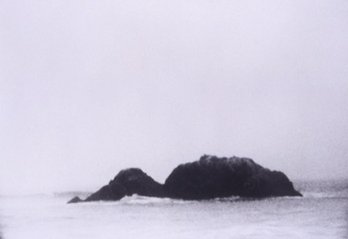Trisha Donnelly
dal 24/6/2005 al 4/9/2005
Segnalato da
24/6/2005
Trisha Donnelly
Kolnischer Kunstverein, Koln
Central Art Prize. With her installations, video and sound work, photographs, performances, and drawings, the artist has a very special way of creating moments of absolute concentration and focus. Almost obsessively, she plays with a mixture of fascination and perplexity. In her work, she explores the boundaries of sensual perception.

CENTRAL Art Prize
For the fifth time, the CENTRAL Health Insurance Company in cooperation with the Kölnischer Kunstverein awards the CENTRAL Art Prize for international artists. With the previous prize-winners Rirkrit Tiravanija (1996), Douglas Gordon (1998), Ernesto Neto (2000) and Florian Pumhösl (2002) the CENTRAL Art Prize has achieved an outstanding reputation within the fine arts scene, which is now continued with the nomination of Trisha Donnelly. Trisha Donnelly was nominated by an international jury consisting of Chen Y. Chaos, chief curator at the Millennium Art Museum in Peking, Hans Ulrich Obrist, curator at the Musée d´Art Modèrne de la Ville de Paris, and Beatix Ruf, director of the Kunsthalle Zürich. With the promotional prize amounting to Euro 75.000,- , in addition to its collection of contemporary art, the CENTRAL Health Insurance Company clearly signals its attention to the most recent trends in contemporary fine art, contributing to its development with active suppor t. The CENTRAL Art Prize enables the prize-winner to spend half a year in Cologne to work on the realization of a new art project, being presented now in this exhibition at the Kölnischer Kunstverein.
With her installations, video and sound work, photographs, performances, and drawings, Trisha Donnelly has a very special way of creating moments of absolute concentration and focus. Almost obsessively, she plays with a mixture of fascination and perplexity. Through her insistent demonstrations of exertion and dedication, it seems that she is capable of altering reality through will alone – which results in an “attraction†of immense intensity. But instead of resolving the situations – previously imagined to be safe, but now broken and totally uncertain – she leaves us behind with a striking feeling of deep, unsettling emptiness and insecurity.
In her work, Trisha Donnelly explores again and again the boundaries of sensual perception. In sound pieces such as “The Shield“ (2004), she uses a full, deep tone that sounds at regular intervals with such intensity that it becomes a physically tangible barrier. That which seems immaterial to us now becomes an architectonic element which divides an entire space into separate areas – but whose impact only unfolds within the visitor himself. Her photograph “The Black Wave†(2002) shows a wave with an overwhelming and also “hidden†power swelling up within it. This power reminds one of severe weather – of rain or a storm – but gives us no hint about how the situation resolves itself. And so it is – the “ephemeral,†the “incidental†which play a special role in Trisha Donnelly’s work – when at the opening of her exhibition at the Casey Kaplan Gallery in New York she appears on horseback as a Napoleonic messenger and announces Napoleon’s surrender to the stunned crowd before turn ing on her horse and riding back into the New York night. These performances, which Trisha Donnelly herself calls “demonstrations†are neither documented on film nor in writing. They are only spread by word of mouth by those who have personally experienced Trisha Donnelly’s performance.
With her work, Trisha Donnelly lets our imagination go beyond what we think we recognize at first glance – which results in a constant interplay between physical and imagined space; between reality and fiction. She throws us back to the profound question “what can we really be sure of?†– upon which we base our existence. And she does so in a stirring manner that is unique in its strength and absoluteness.
For her first big solo exhibition at the Kölnischer Kunstverein, Trisha Donnelly has produced new works and has designed the exhibition architecture herself. The drawings, film and sound works, and photographs being presented were almost all created during her 6-month stay in Cologne and are also a result of her exploration of the exhibition venue, its history and significance.
Biographical Information
Trisha Donnelly, born in 1974, lives and works in San Francisco.
Solo and group exhibitions(selected): Le Consortium, Dijon (2001); Casey Kaplan, New York (2002); “Utopia Station,†50th Biennale of Venice (2003); “54th Carnegie International,†Carnegie Museum of Art, Pittsburgh (2004); “Junge Szene,†Secession, Vienna (2003); Galerie Hauser & Wirth, Zürich (2003); “It happened tomorrow,†Biennale de Lyon (2003); Carnegie International, Pittsburgh (2004); Art Pace, San Antonio (2005).
Image: Untitled (rock), 2003, courtesy Air de Paris, Paris & Casey Kaplan, New York
Kölnischer Kunstverein
Die Brücke, Hahnenstraße 6
D-50667 Köln
Open: Tuesday – Sunday 1 – 7 pm



